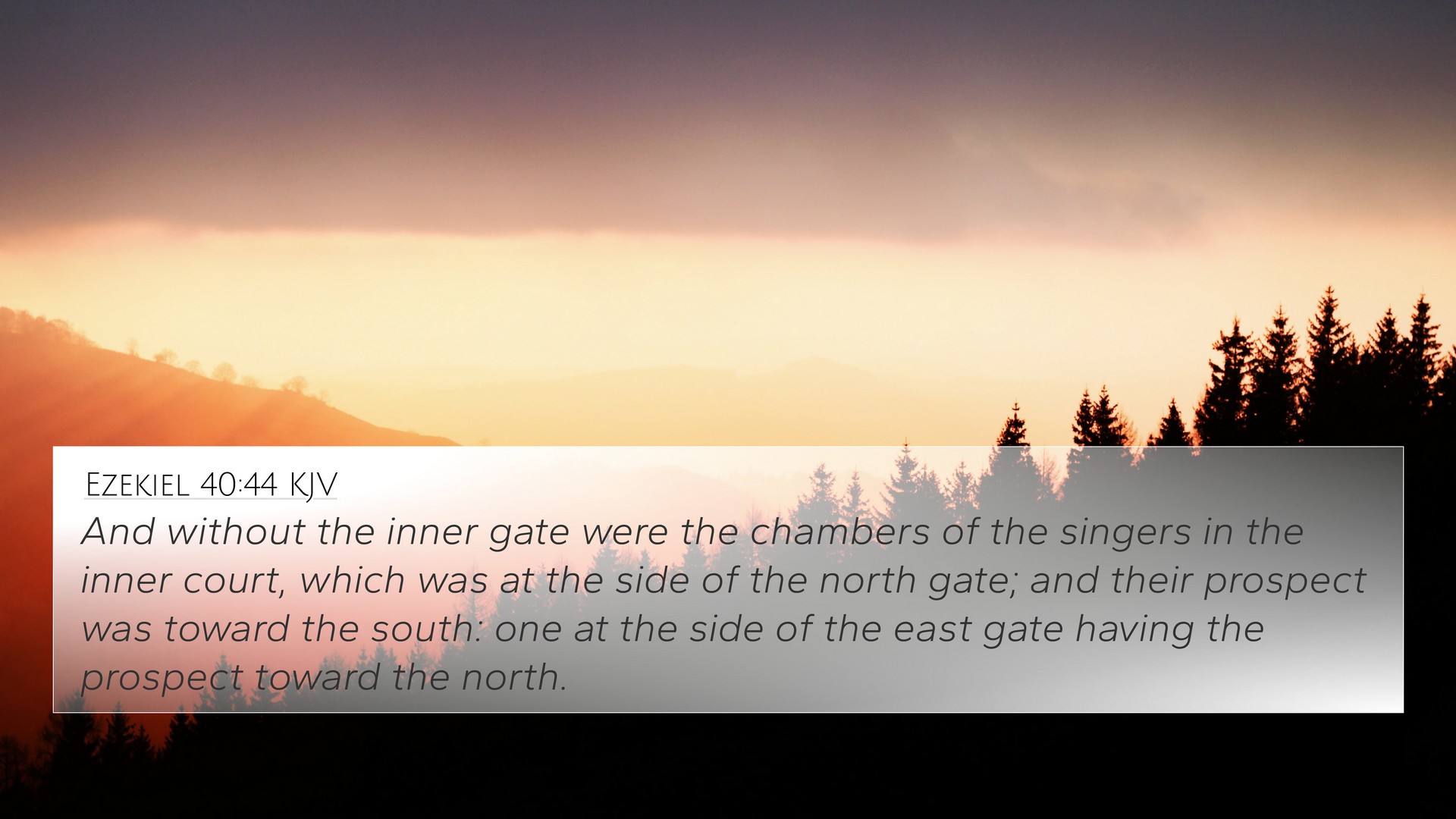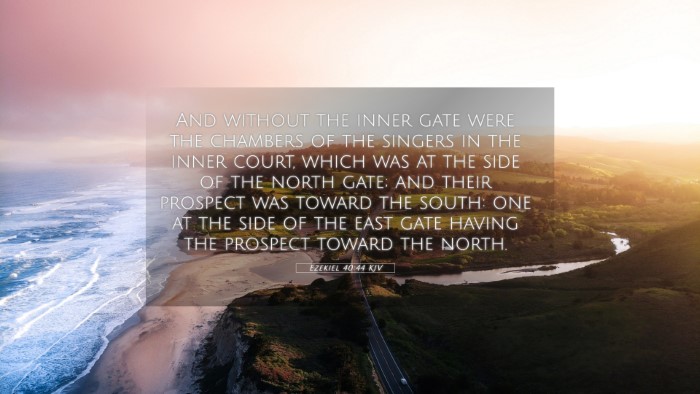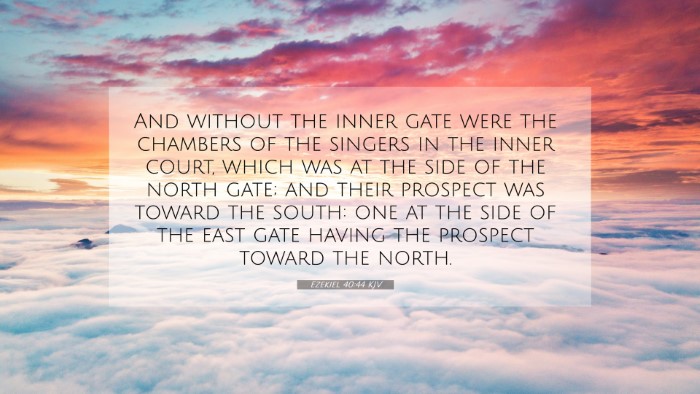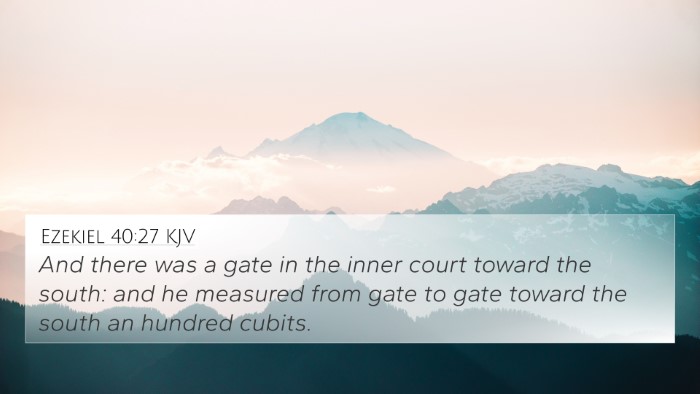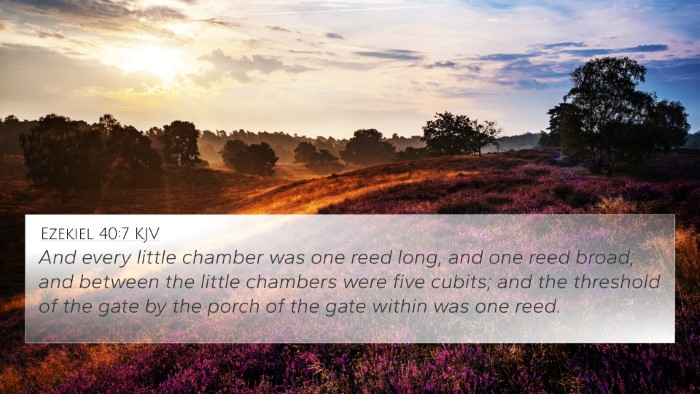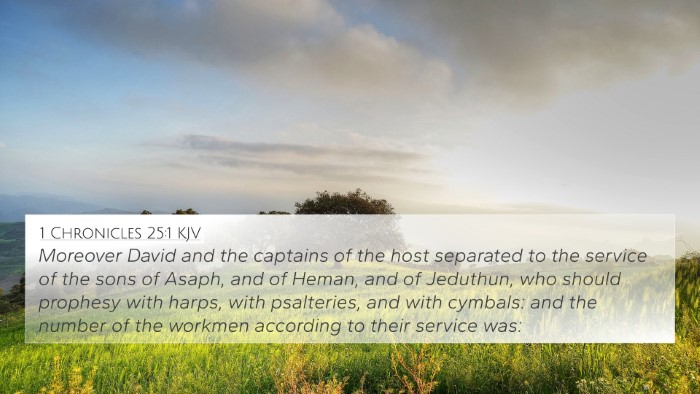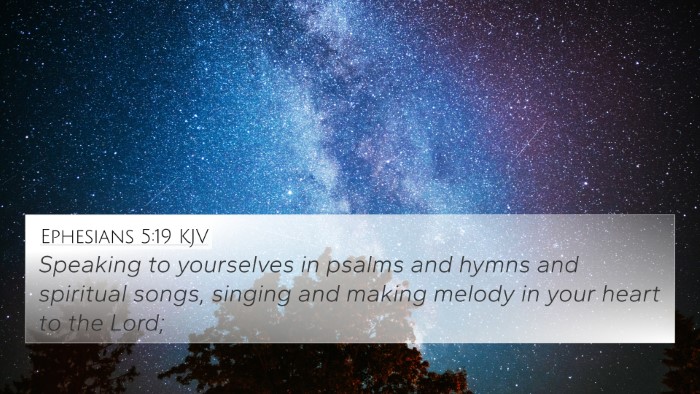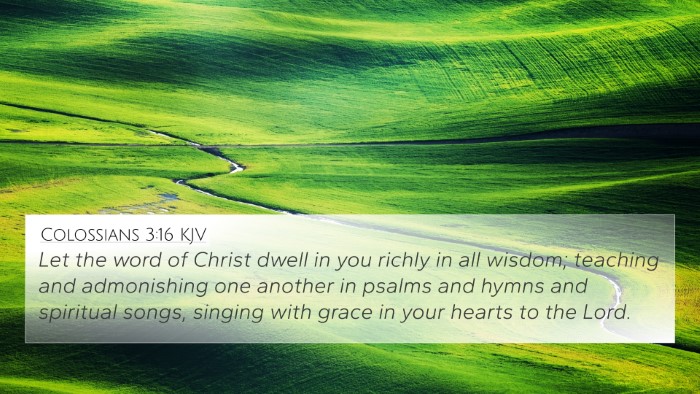Ezekiel 40:44 - Meaning and Commentary
Ezekiel 40:44 states:
“And without the inner gate were the chambers of the singers in the inner court, which was in the inner court: they were the singers, which were the children of Asaph, which stood in the ministry of the house.”
This verse is situated within a detailed visionary account that the prophet Ezekiel receives regarding the future temple. It emphasizes the organization of the services, particularly those related to worship.
Summary of Insights from Public Domain Commentaries
The commentary from Matthew Henry explores how the chambers of singers represent a structured form of worship. Henry indicates that music played an essential role in the life of Israel, serving as a means to honor God and enhance the worship experience. The singers, being the children of Asaph, highlight a continuity of worship tradition rooted in Israel’s history.
According to Adam Clarke, the chambers designated for singers suggest a deliberate location for those who lead in praise and music, signifying their importance in worship. Clarke notes that Asaph was a pivotal figure associated with sacred music, and the reference to his lineage signifies the enduring legacy of worship through song in the temple services.
Albert Barnes adds that the inner court highlights the sanctity and interior nature of the worship spaces, creating a more intimate setting for communion with God. The presence of singers specifically in this area indicates that worship is not just a functional activity, but a deeply spiritual one, meant to draw the people closer to the divine presence.
Theological Themes
- Worship as Central Activity: The dedicated space for the singers underscores the significance of worship within the life of God's people.
- Historical Significance: Referring to the children of Asaph connects the current worship practices with the historical worship lineage of Israel.
- The Role of Music: Music is portrayed as an integral component of spiritual expression, enhancing the worship atmosphere.
- Structure in Worship: A well-ordered approach to worship is essential, as indicated by the specific assignments and locations of the singers.
- Divine Presence: The arrangement speaks to a desire for closeness to God that music facilitates during worship.
Cross-References to Ezekiel 40:44
This verse connects to several other scriptures, which can enhance our understanding through thematic Bible verse connections. Below are notable cross-references:
- 1 Chronicles 6:31-32 - Discusses the role of Asaph and his descendants in leading worship through music.
- Psalm 73:1 - Relates the psalmist’s experience of God’s goodness, often expressed through music.
- Psalm 150:3-6 - Encourages the praising of God through various instruments and dance, correlating with the worship style of the singers.
- 2 Chronicles 5:13-14 - Describes the unity of singers and musicians during the consecration of the temple, emphasizing the importance of worship in acknowledging God’s presence.
- Nehemiah 12:44-47 - Chronicles the establishment of choir leaders and singers for the temple, showing a historical precedence for organized worship.
- Isaiah 51:3 - Offers a hymn of restoration that connects the themes of joy and praise in worship settings.
- Hebrews 2:12 - Discusses the assembly of the faithful with a reference to worship, linking New Testament themes of praise with Old Testament practices.
Understanding Through Comparative Analysis
Engaging in a comparative Bible verse analysis reveals connections that enrich our understanding of worship in both the Old and New Testament contexts. The communal aspect of singing reflect how God's people have always gathered to exalt Him.
The linkage between passages allows for an inter-Biblical dialogue that reveals the continuity and evolution of worship practices. By cross-referencing, we expose layers of meaning not only in Ezekiel’s vision but also in the historical and future expectations of worship.
Concluding Thoughts
In studying Ezekiel 40:44, one sees a confluence of music and worship deeply embedded in Israel’s religious tradition. The insights gained from various commentaries highlight both the significance of structured worship and the historical legacy of those who led it. Through tools for Bible cross-referencing, believers can explore these themes further and discover how they apply in contemporary worship settings.
By engaging with the text and its connections, readers will find that Bible verses relate to each other in profound ways, allowing for a richer understanding of Scripture as a unified narrative focused on honoring God.
